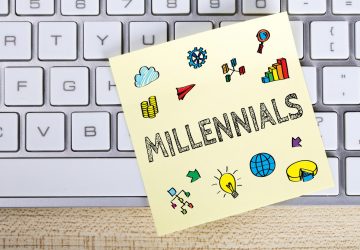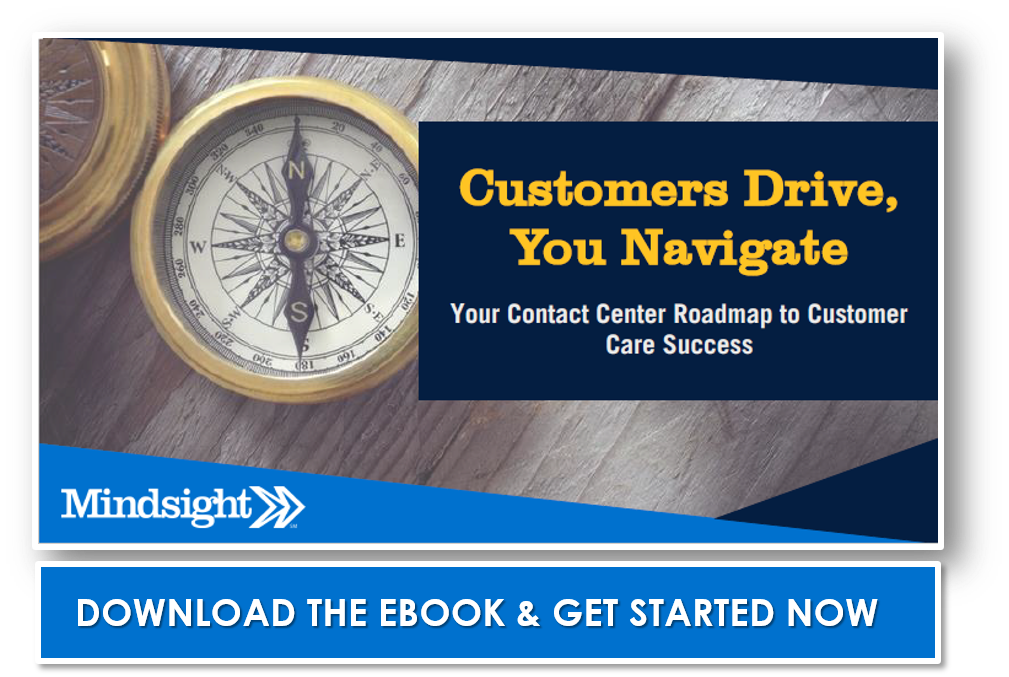July 21, 2018 by Siobhan Climer
It’s no secret that retention rates for millennials in the workplace are in decline. According to the U.S. Bureau of Labor Statistics, workers between the ages of 20 and 34 stay with an organization for an average of just a little over 2 years. In contact and call centers, the rates are even worse. Turnover in most call centers averages around 33%, but can skyrocket into the triple digits.
While these rates vary by region and industry, it is the responsibility of contact center management to capture and retain critical millennial talent by examining the data and implementing a human capital retention strategy. By understanding the driving factors within your market’s workforce, you can better meet the needs of your customers, both those you serve and those who provide that service. Millennials in the workplace now make up the largest generation. By understanding this large socio-generational group, you can respond better to them and to the society they represent.
The Elusive Millennial
 The Millennial generation, or Generation Y, refers to those born between approximately 1982 and 1998, though the range can be as wide as 1980 to 2004. Much has been written about their overarching characteristics. Depending on which clickbait article you open, you’ll find lots of “research” saying they are lazy, open-minded, bored, creative, narcissistic, self-expressive, needy, upbeat, selfish, or honest.
The Millennial generation, or Generation Y, refers to those born between approximately 1982 and 1998, though the range can be as wide as 1980 to 2004. Much has been written about their overarching characteristics. Depending on which clickbait article you open, you’ll find lots of “research” saying they are lazy, open-minded, bored, creative, narcissistic, self-expressive, needy, upbeat, selfish, or honest.
While researching this article, we came across several articles characterizing the millennial in a new, yet somehow familiar way. From psychologist Jean Twenge’s 2006 book “Generation Me”, to author Ron Alsop’s 2008 book “Trophy Kids”, to a 2013 Time story titled, “The Me Me Me Generation”, everyone seems to have something to say about the millennial. And frankly, not much is complimentary.
That isn’t what we plan on doing. While we have no intention of handing out trophies, we do want to do an honest appraisal of how workforce needs have evolved. Millennials, just like every other generation, want work that is meaningful, fulfilling, and puts food on the table. That hasn’t changed. What has changed is the way technology and a global sense of community have impacted the workforce landscape. Adapting for millennials really means adapting for a connected, convergent market.
So, how do you do that?
4 Steps To Retaining Millennials In The Workplace
- Build A Team That Shares A Customer-Centric Value Set
In 2012, the MIT Media Lab released a study showing that by ensuring all members of the same call center team took their breaks together, the call center’s AHT (average handling time) fell by more than 8% overall, and 20% for the lowest performing teams. The trend of encouraging employees to take breaks is becoming more common, yet contact centers are behind the curve. Call center employees have even gone so far as to describe themselves as “digital slaves”, which is not ideal for building employee loyalty.
 Developing team dynamics is a big step in the right direction. This begins with the hiring process. Assessing candidates cultural fit isn’t a new idea, but using algorithms that are transparent and quantifiable is. Hiring managers should interview successful employees who have remained with the company to develop a complete profile for an ideal candidate. Then, using those profiles, the manager can hire candidates that will be more likely to stay.
Developing team dynamics is a big step in the right direction. This begins with the hiring process. Assessing candidates cultural fit isn’t a new idea, but using algorithms that are transparent and quantifiable is. Hiring managers should interview successful employees who have remained with the company to develop a complete profile for an ideal candidate. Then, using those profiles, the manager can hire candidates that will be more likely to stay.
When call center agents have a shared mission to support the business and its customers, everyone wins. When you interview your top-performing agents, you will likely find this is the case. Ensure that a value for customer satisfaction places high on your ideal candidate profile agenda.
- Focus On Objectives, Not “Showing Up”
 One of the benefits of millennials in the workplace is their desire for flexible work schedules. 60% of contact centers are using virtual agents, and for good reason: reduced costs, enhanced productivity, 24/7/365 availability, and improved employee loyalty. Technology has advanced enough that transitioning to a flexible work-from-anywhere model is easy to do with software-as-a-service (SaaS) and unified contact center platforms (UCCX, UCCE, CIC).
One of the benefits of millennials in the workplace is their desire for flexible work schedules. 60% of contact centers are using virtual agents, and for good reason: reduced costs, enhanced productivity, 24/7/365 availability, and improved employee loyalty. Technology has advanced enough that transitioning to a flexible work-from-anywhere model is easy to do with software-as-a-service (SaaS) and unified contact center platforms (UCCX, UCCE, CIC).
The key during this transition is to focus on met objectives and productivity. Clocking in on time-cards isn’t an effective measure of whether someone is doing good work. Adapting new measures of success that are relevant to flexible scheduling and customer needs might mean a big leap for management. But the change is worth it.
Flexible scheduling doesn’t necessarily mean your agents can log on and off whenever they choose. It means communicating with agents to find a schedule that works for them and developing a work model that enables staff to work-from-home. This will both meet employee demands and provide a broader approach to supporting your customers.
- Collaborate Using Tech
 Millennials in the workplace today are connected. They understand and grew up with technology, which is why they are also sometimes called, “Generation Net”. If your enterprise fosters innovation and uses technology, millennials will be more inclined to join your team. 78% of millennials report being strongly influenced by how innovative a company is during their job hunt.
Millennials in the workplace today are connected. They understand and grew up with technology, which is why they are also sometimes called, “Generation Net”. If your enterprise fosters innovation and uses technology, millennials will be more inclined to join your team. 78% of millennials report being strongly influenced by how innovative a company is during their job hunt.
Use this to your advantage. By integrating omnichannel communication technologies in your contact center, you can both improve workflows and overall employee satisfaction. Make this a selling point of your contact center – both to your customers and to those who serve them.
- Recognize, Respond, And Plan Together
 The joy of earning a trophy and receiving praise from your supervisors and mentors isn’t a generational quality; it’s a human one. Take the time to recognize top-performing agents publicly, and encourage all employees privately. The leadership team in the contact center needs to engage with the support department and consider each agent’s performance and needs. As one Manager of Support Operations put it, this helps them “feel cared for as a person.”
The joy of earning a trophy and receiving praise from your supervisors and mentors isn’t a generational quality; it’s a human one. Take the time to recognize top-performing agents publicly, and encourage all employees privately. The leadership team in the contact center needs to engage with the support department and consider each agent’s performance and needs. As one Manager of Support Operations put it, this helps them “feel cared for as a person.”
Finally, ensure your contact center employees are engaged in business planning. Millennials in the workplace are growing up; in fact, the oldest are entering their mid-30s. These individuals will be taking on leadership roles and will prioritize values, flexibility, and feedback. Lay the foundations for that transition by communicating clearly and frequently. Engage your employees in industry conversation so that they have both the sense of value and the sense of ownership that will encourage them to stay and support your enterprise.
Millennials in the workplace are, in the end, not much different than anyone else. All your contact center employees, regardless of the year they were born, will benefit from developing an agile management mindset that recognizes achievement, focuses on the needs of both employees and customers, and facilitates growth in your industry and beyond.
Facilitating this transition is what we do at Mindsight. Whether you are looking to implement an omnichannel solution, deploy IVR, or simply chat about the future possibilities, we are here to help.
Contact us today to develop a roadmap for your contact center.
Like what you read?
About Mindsight
Mindsight, a Chicago IT services provider, is an extension of your team. Our culture is built on transparency and trust, and our team is made up of extraordinary people – the kinds of people you would hire. We have one of the largest expert-level engineering teams delivering the full spectrum of IT services and solutions, from cloud to infrastructure, collaboration to contact center. Our highly-certified engineers and process-oriented excellence have certainly been key to our success. But what really sets us apart is our straightforward and honest approach to every conversation, whether it is for an emerging business or global enterprise. Our customers rely on our thought leadership, responsiveness, and dedication to solving their toughest technology challenges.
Contact us at GoMindsight.com.
About The Author
Siobhan Climer, Science and Technology Writer for Mindsight, writes about technology trends in education, healthcare, and business. She previously taught STEM programs in elementary classrooms and museums, and writes extensively about cybersecurity, disaster recovery, cloud services, backups, data storage, network infrastructure, and the contact center. When she’s not writing tech, she’s writing fantasy, gardening, and exploring the world with her twin two-year old daughters. Find her on twitter @techtalksio.


